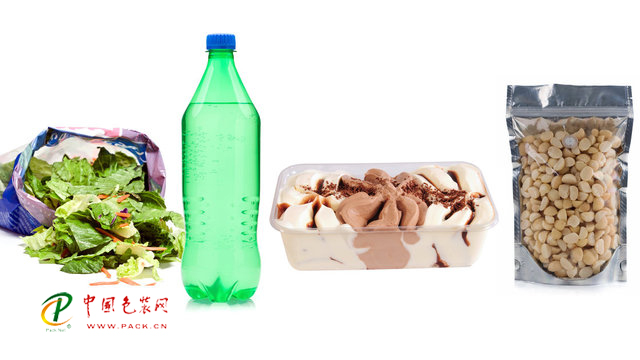[China Packaging Network News] Whether you like it or not, plastic packaging has become an indispensable ingredient in the food system. When we buy salads, sandwiches and chips, we immediately throw out the plastic packaging outside, which is wasteful; but it is also this plastic packaging that allows us to keep a lot of food fresh in transit. And we never go deep into this.

Many plastic wraps allow us to eat while walking, or to taste the easily deteriorating cookies and the flesh from the other side of the earth. Behind them are actually a lot of scientific principles and inventions.
Aaron Brody, a food packaging consultant and associate professor of food science at the University of Georgia, according to him, the plastic revolution of food packaging began in the 1960s. Therefore, plastic is used because it is lighter than glass, firmer than paper, and cheaper.
But Brody also pointed out: "Almighty plastic does not exist." Many of the packaging bags that we come into contact with are made from different types of food packaging plastics.
Potato chips bags
In the case of potato chips, the main ingredient is a plastic called oriented polypropylene. Brody explained: “That's an excellent moisture barrier.†In the packaging of potato chips, moisture protection is critical, “because chips absorb water vapor and start to deteriorate. Wet potato chips are not Some people like it.†To further reinforce, many potato chips also have a thin layer of aluminum on the inner layer.
Product names and nutritional information are printed on the outer layer, and a layer of polyethylene (a material for making plastic shopping bags) is also sandwiched between the inner and outer layers.
Brody also revealed that most companies will inject nitrogen into the bags before sealing them. “This will prevent crushing of the potato chips.†Oxygen will oxidize the fat in the potato chips and produce a strange smell. Nitrogen does not cause any chemical reaction that destroys the taste.
Brody also said that food companies often spend a lot of time designing packaging in order to best preserve every product they sell. This is also the practice of the military. In previous reports, the Army had used a package to extend the shelf life of sandwiches to two years.
Salad bags
Like the potato chip package, the ready-to-eat vegetable salad bag is made of polypropylene and is also filled with a pack of nitrogen. Unlike potato chips, salad leaves need to breathe a little oxygen, which is why there are holes in salad bags. Brody pointed out: "Small holes allow oxygen to enter and carbon dioxide can escape."
He added that the interior of these bags often has a thin layer of anti-fog, “so that condensation does not occur, and consumers can see the beautiful green leaves.â€
Ice cream bucket
When making many plastic packages, manufacturers worry not only about how to keep the air out, but also how to store water vapor. For example, Brody said that this is very important in the packaging of ice cream. A bucket of ice cream must be able to be opened and closed easily, but it must also have a tight seal that locks in moisture to maintain a smooth mouthfeel.
When stored in the refrigerator, sublimation sometimes occurs, that is, the phenomenon that the water directly changes from a solid to a gaseous state. “If the sublimated water is lost, it cannot be restored, and if the ice cream loses moisture, it will accumulate in the sand,†Brodi said.
He also pointed out that this is the reason why a layer of polyethylene is added to the bucket of ice cream. The advanced ice cream bucket is made of thick and strong material.
Of course, as food expert Herbert? As Herbert Stone puts it, even after various developments, most plastic packaging still cannot preserve food under extreme conditions. Stone is a food industry consultant and former chairman of the Institute of Food Technicians.
Stone points out: "When food companies use plastic containers, they must ensure that they do not change the taste of food." He added that plastic is not an inert material, it can react with other chemicals. And unlike many glass or metal products, it also allows air to pass through.
Water bottle
Have you ever put a plastic water bottle in a hot car too long? It is mostly weird to drink it. But the reason is different from what you think: It's not because the chemicals in plastics are seeping into the water.
Stone explained that trace amounts of air can penetrate plastics, and when the temperature rises, the movement of air will also accelerate. Heat also accelerates chemical reactions. When the chemicals in the bottle react with each other or react with substances in the external environment, the water in the bottle will smell strange.
Keeping a bottle of soda in a hot car, the carbonic acid in it quickly escapes from the bottle. "What's left is no soda soda," Stone said. "Plastics are really convenient, but it's not everything."
In addition to technical limitations, all of the plastic packaging we use today also generates a lot of trash. In 2012 alone, the United States produced 14 million tons of plastic waste that used to be bags and containers. Plastics cannot be easily biodegraded, so they sometimes enter the oceans. This not only harms sea creatures, it can even pollute seafood.
Although many types of plastics are already recyclable, bright packaging that contains multiple layers of plastic is very difficult to recycle, because in the recycling station, different types of plastic are handled separately. Stone said, however, that we are also becoming more and more adept at making plastics that are both easy to use and environmentally friendly. We are even trying to convert scraps such as whey protein into plastics.
